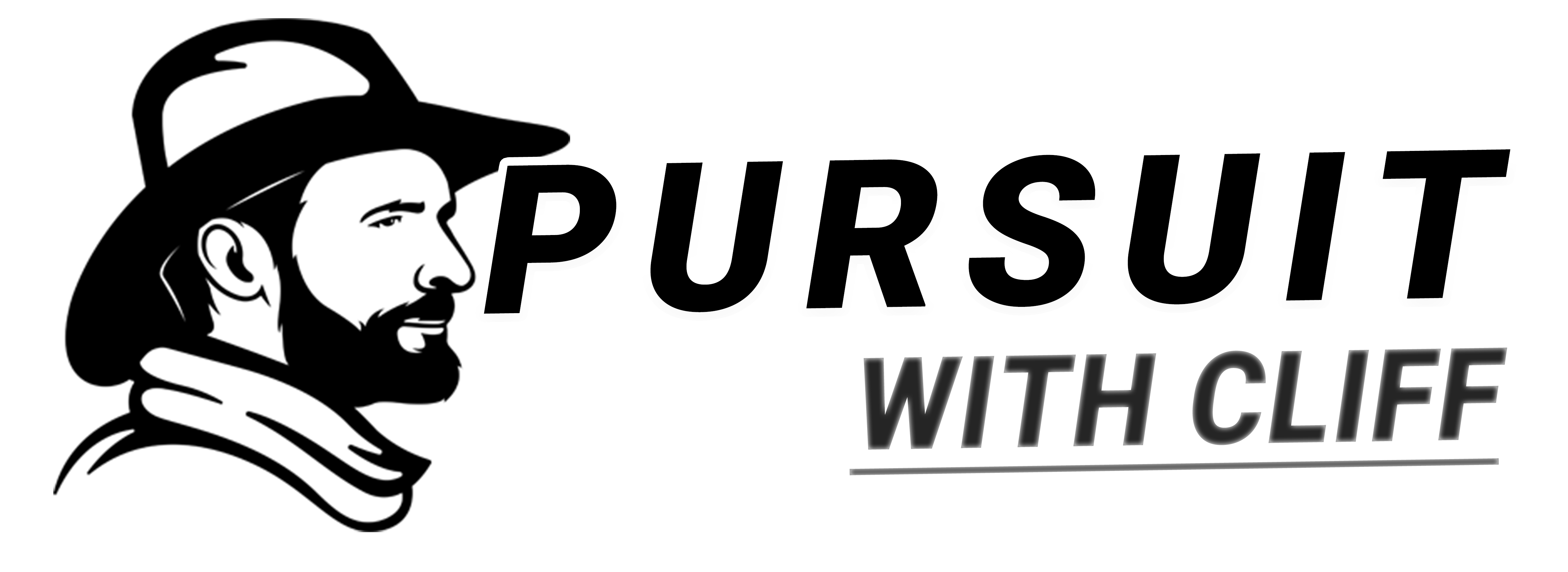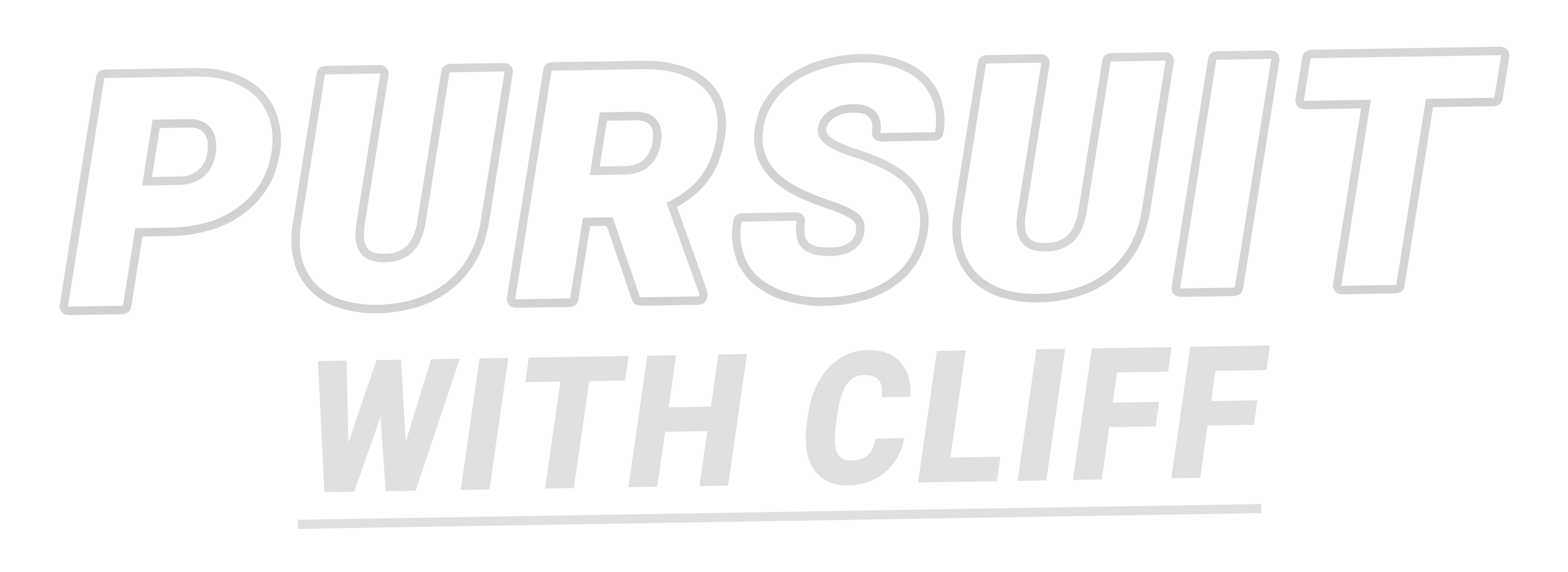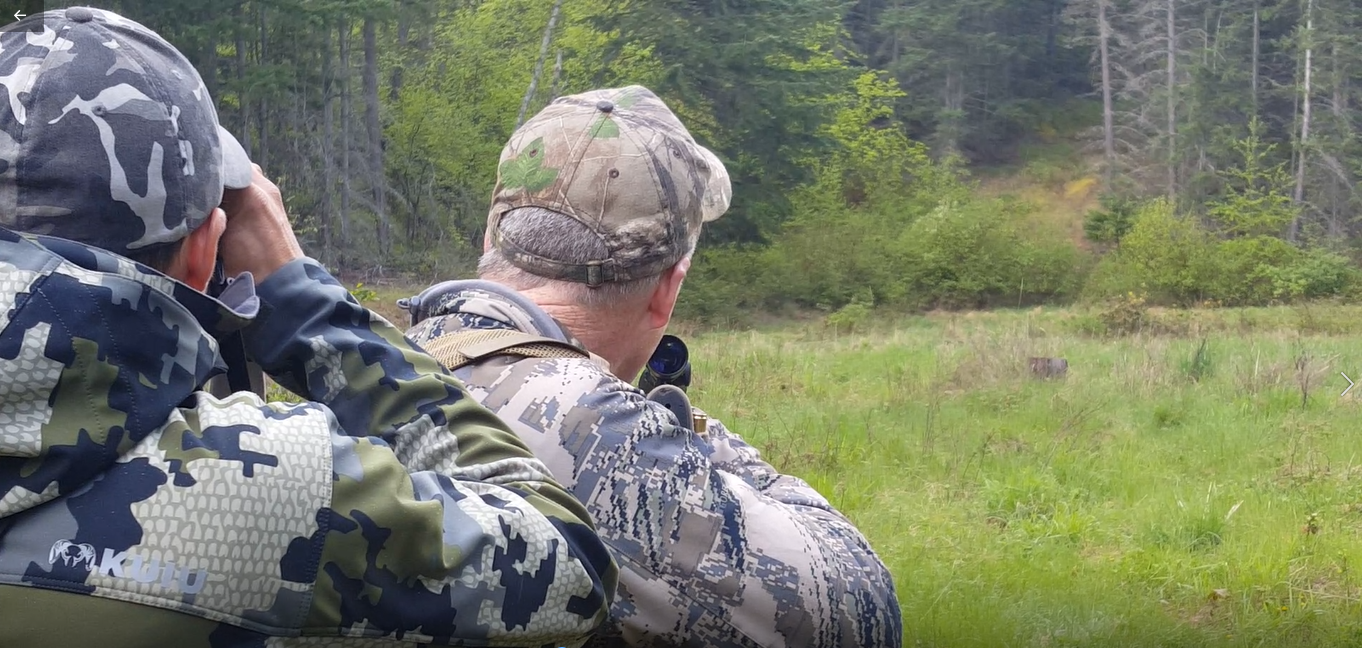This article is one of many from our Black Bear Prep Series
Understanding which phase of the Spring you will be hunting should frame the hunt’s strategy and your expectations. Below, we segment the season into three phases: The Wake-Up, The Rut, and The Post-Rut.
The Wake-Up
The wake-up correlates with green grass. Once you start seeing the first indication of green grass, bears are starting to leave the den to munch on it. After all, the poor bruins haven’t eaten in months!
The timing of this phase is dependent on geography and weather. Low lying coastal areas will typically have their wake-up around mid-April. As you move to the coastal mountains, wake-up turns on in the first couple days of May. Last, some of the interior areas of British Columbia and the Western States won’t have their wake-up until the 10th-15th of May. These dates, with the first appearance of green grass, will shift forward or backward based on warmth and snow melt.
Under normal spring weather patterns, bears “trickle” out of their dens. However, a unusually concentrated warm-snap can cause an influx of bears arising from their dens. Studies suggest that 3-4 days of approximately 40 degree weather will get the bears up from their dens. The bears will hang near the den until there is an additional 3-5 days of 40+ degree weather. At that point, bears move away from the den to feed.
Pros-
- The first bears to leave the den are the larger boars. That’s why I personally enjoy guiding and hunting this phase more than any other. Black bear field judging is difficult, and having the confidence that almost every bear you spot is worth looking at will make the hunt more enjoyable.
- Fun terrain. The first green up is usually on the edges of south facing snow slides. These areas are challenging but represent a natural hunting situation.
- Limited human activity. Roads are muddy and nights are still chilly. This keeps most other recreational user out of the woods.
- Great hides.
- “Walking Hibernation”. When bears first wake-up their senses remain down for roughly a week, particularly their sight. Part of this is the physical transition they are going through, but they are also starving and focused on feeding. A bear that is ferociously tearing up grass is easier to stalk and observe from closer distances.
Cons-
- Far less bear density. Seeing 1-2 bears a day is the norm. You might even have a day or two that you don’t see a bear.
- Fun terrain. Yes, this is a pro and a con. Bears will be holding to more natural terrain that is a physical challenge to hunt. Green up occurs on roads and cut-blocks in the later phases due to timber cover and because more logging activity occurs on North facing slopes.
- If it’s a “late” year, you might be limited on where you can hunt. Sometimes even huge hunting areas are limiting because of snow cover.
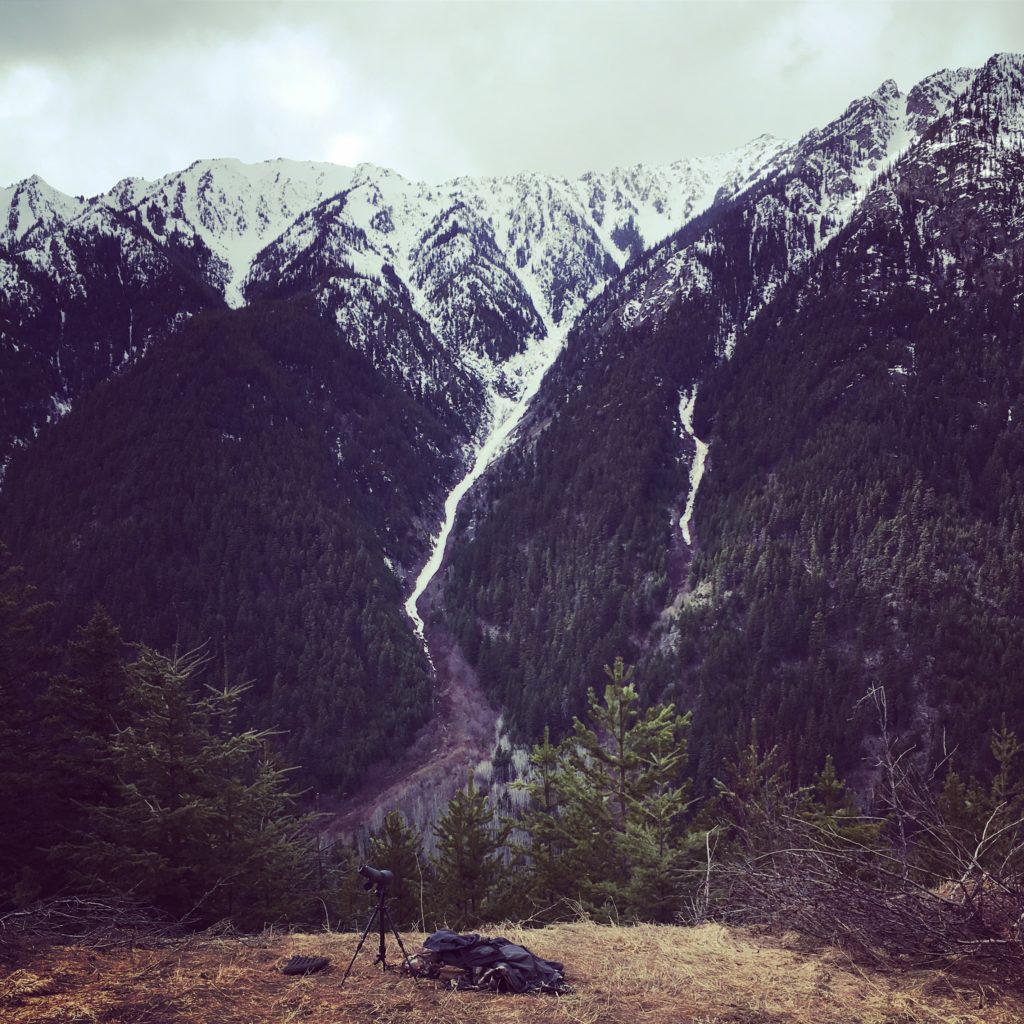 Strategy-
Strategy-
All the phases are glassing intensive, but during the Wake-Up glassing is the only game in town. We focus on glassing natural snow slides. Typically one side of a snow drift will green up first due to exposure. Bears will bed in the brush and timber on that edge and periodically come out to feed. The prime times are 9-11am in the morning and after 5:30pm. This time of year, bears are concentrated on feeding and are less likely to roam. Patience is the name of the game, as a big boar won’t leave a slide for at least a couple days.
This is a good time for archery hunts as the bears are easier to to stalk and a single bear can offer several opportunities.
This phase has the most chance of rainy days. Bears generally hate the rain, but will come out once the sun burns cloud cover off.
The Rut
Bears can breed anytime from Mid-April through July, but the peak is May 25th-June 8th. Unlike other species, the actual date of conception does not affect the birth date of cubs. Bears have the unique ability to delay implantation of fertilized eggs until they den in the Fall. This is the one phase where it is common to see multiple bears together. Sows who have never had cubs but are sexual mature will get the attention of roaming boars. In addition, sows with two year old cubs will wean those cubs before this period. This is a safety mechanism so the cubs are not killed by boars. Sows with yearlings or newborns will generally stay away from all other bears and keep their young cubs close.
Pros-
- The density of bears is 2x-3x compared to the Wake-Up
- Big boars roam for miles. Every day is a new day that might expose a monster bear that came in from a completely different area.
- Boars are concentrated on females, which keeps down there guard.
- More of the hunting areas have opened up due to snow melt. Areas that are more accessible via vehicle can make for a less physical hunt.
Cons-
- More public use and resident hunters in most parts of Canada.
- You need to start checking bears’ hides for rubs. At this point most bears have been up for a couple weeks and they will start to rub their nice winter coat off.
- Bear field judging and sex identification is more important. Now you are starting to see more sows, cubs and juvenile boars.
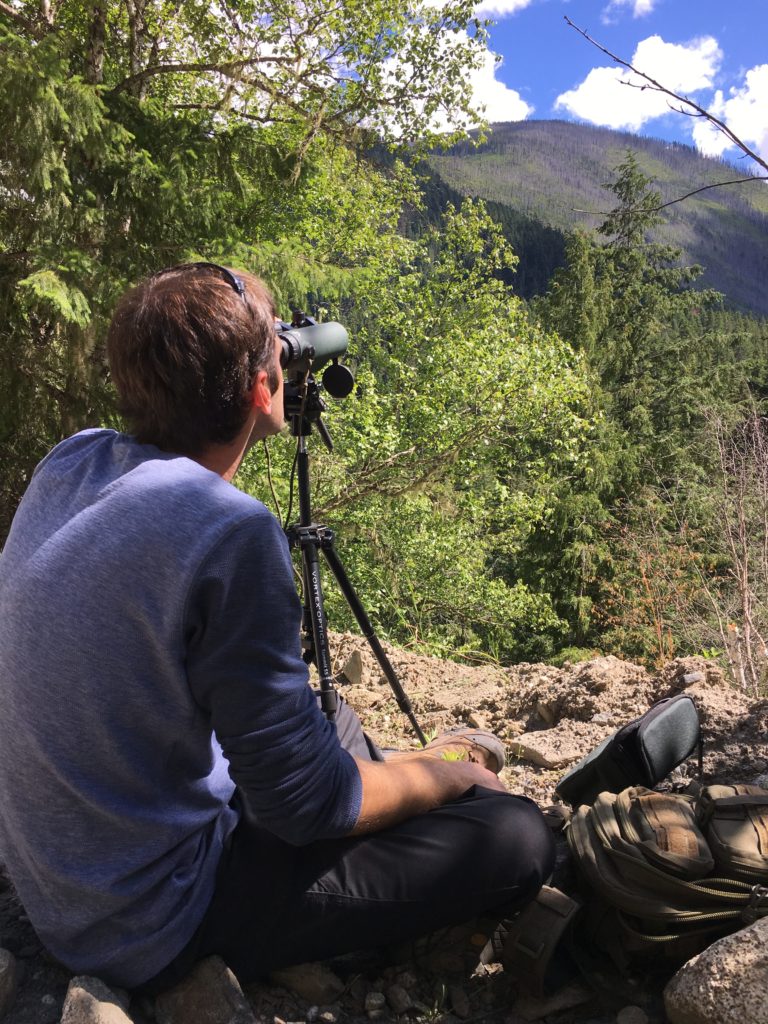 Strategy
Strategy
At this point our glassing strategy shifts from natural snow slides over to logging roads and cut-blocks (we call them clear cuts here in the US). Many logging roads can be glassed from a vantage point. Sows and boars will feed on the grass filled road shoulders and use the roads for maneuvering. Based on timing and sun exposure, there will be “hot spots” in the logging cut-blocks where fresh green grass is starting. Even if a shooter bear isn’t present today on these prime habitats, it’s likely they will eventually show up.
This time of year, “still hunting” (walking quietly) decommissioned logging roads also works. These secluded roads tend to green up later as they are usually spurs off the main roads into less exposed terrain and they have older vegetation growth.
Although big boars are distracted by chasing female bears, they are constantly on the move this time of year. This makes the Rut a bit less forgiving for the archer.
For states and provinces that allow baiting, this is the prime time for both archery and rifle equipment.
The Post-Rut
During this time, let’s call it June 8th and beyond, rutting activity will continue but is mitigated by warmer temperatures. All the bears are awake and feed is plentiful across the hunting areas. Most outfitters close down shop around the 15th of June in Southern BC. Areas that allow baiting do the same, because the baits become increasingly less effective as natural food becomes abundant.
Pros-
- High bear density – even the odd straggler is awake now!
- Warmer temperatures than the two earlier phases make for comfortable hunting
- Limited hunting area downside related to a “late spring” or “heavy snow pack” year is mitigated. All the country is accessible.
Cons-
- Depending on the region, bugs can start becoming an annoyance while hunting and in camp
- More recreational use of hunting areas by residents
- The complete green-up of grass, brush and trees makes glassing up bears much more difficult
- Unusually warm temperatures can slow down all bear activity.
- Hides are touch-and-go this time of year. Be meticulous with your glassing before you harvest.
Strategy-
The strategy this time of year is similar to the Rut phase. Because of the vegetation, glassing sessions tend to be longer and more meticulous. More often than not, bears are spotted on logging road shoulders or fresh clear cuts. This has less to do with habitat and more to do with the ability to see bears in these areas.
